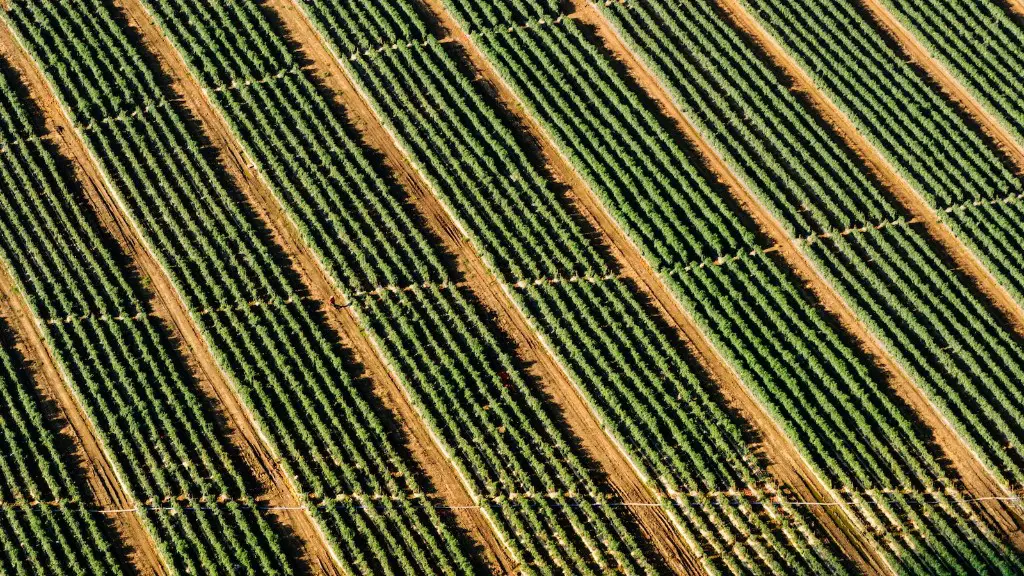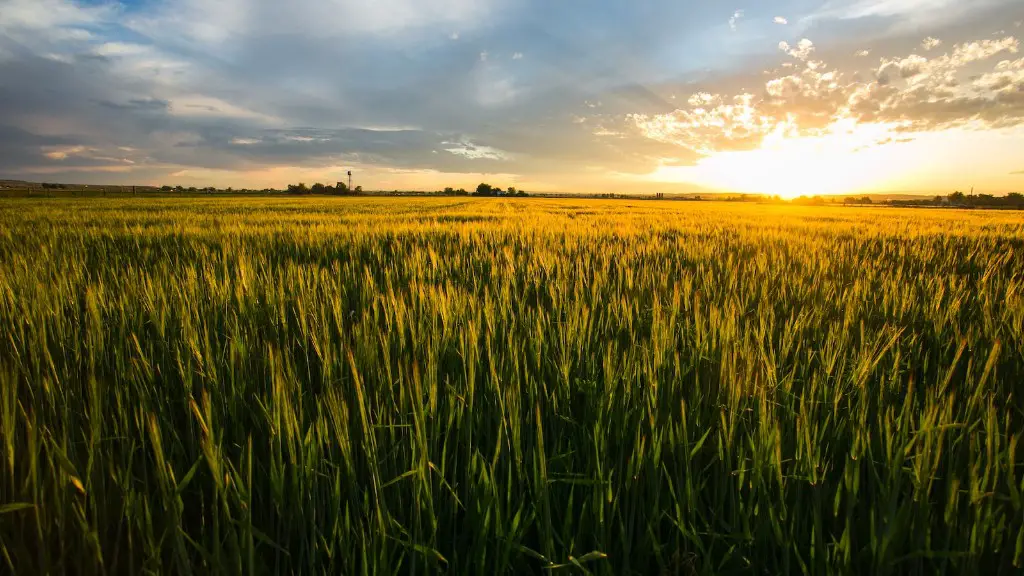Throughout history the development of medicine and agriculture has driven a steady rise in population levels. From the development of primitive hand tools and the domestication of animals, to the advent of more advanced pest control methods, modern medical breakthroughs and the introduction of large-scale industrial farming, advances in these areas have dramatically changed the way humans live and interact with their environment, resulting in a dramatic rise in population levels.
Advances in medicine have contributed significantly to population growth. Developments in antibiotics, immunizations, surgery, public health education and preventive care have resulted in considerable increases in life expectancy and lowered mortality rates, enabling humans to live longer, healthier lives and produce more children. In addition, the development of methods of contraception and improved access to healthcare and nutrition have made it easier for people to plan, space out and sustain larger families than ever before.
Advances in agriculture have played a role in population explosions by creating the conditions necessary for larger numbers of people to be fed and sustained. The development of new technologies for irrigation and seeding, combined with the development of new varieties of crops and livestock, have enabled large-scale farming operations to exist, capable of producing enough food to feed large numbers of people, helping to offset the effects of increased mortality rates.
These advances have been further augmented by the application of industrially produced chemicals and fertilizers which have made it possible to grow far more with far less land. This has allowed for more efficient production and for larger yields, which in turn have led to a lower cost of food, making it possible for more people to feed themselves and their families at a cheaper cost.
The combined effect of all these developments has been a dramatic increase in global populations that is rapidly approaching critical levels. As populations grow, the need for adequate housing, infrastructure, water and other resources also grows exponentially, leading to overpopulation of cities and ecosystems and to unsustainable levels of resource usage. The consequences of this can be seen in the form of widespread poverty, illness, famine and social unrest.
It is clear that advances in medicine and agriculture have played a major role in the growth of modern populations. By making it easier to sustain larger numbers of people, and by providing them with the tools and resources necessary to do so, these advances have created the conditions for an unprecedented population explosion. While this has offered great opportunities for human progress, it has also brought about a number of complex and often devastating consequences.
Impact Of Overpopulation
The most obvious impact of population overgrowth is the enormous pressure that it places on global resources. With more people living on the planet than ever before, demand for natural resources, such as food, water, energy and land, has reached unprecedented levels. This can result in resource scarcity, increased competition and rising prices, as well as deteriorating environmental conditions, as more lands are cleared for agricultural and industrial purposes.
Another serious consequence of overpopulation is the increasing pressure it places on public services and infrastructure. As more people enter into a given area, more demand is placed on existing health, education, transportation and other services, creating a strain on resources and often resulting in degraded quality of service. The overcrowding of cities and slums can also lead to a rise in crime and the deterioration of the urban environment, as well as a loss of biodiversity in ecosystems that have been overexploited for their resources.
Overpopulation can also have profound economic impacts, leading to severe labour market imbalances and higher unemployment. Additionally, the pressure of population growth on wages can lead to inadequate levels of compensation, driving down quality of life and leading to higher levels of underemployment.
Finally, the increased global mobility that population growth has engendered has enabled the rapid spread of diseases and the rapid proliferation of invasive species which can disrupt local ecosystems and endanger native species. This can further deplete natural resources and lead to severe environmental degradation.
Social Factors
Another major consequence of population growth is the strain that it can place on social systems and communities. As populations increase and resources become scarce, competition among individuals can increase, leading to greater levels of social unrest and conflict. This can also lead to increased levels of inequality, poverty and social injustice, which in turn can contribute to further population growth.
Increased population levels can also result in greater concentrations of individuals in specific locations, leading to greater levels of social and cultural homogeneity. This can reduce opportunities for cultural exchange, diversity and innovation, leading to an erosion of cultural heritage and an overall lack of creativity and dynamism.
Additionally, population growth can lead to an increase in stratification of social structures and a greater homogenization of public policy. As populations grow and demand for resources increases, governments and corporations can come under pressure to prioritize economic growth and short-term profits, leading to public policies that are not universally beneficial.
Finally, population growth can lead to higher levels of pollution and environmental degradation, caused by increased production of commercial and industrial goods and an increased reliance on fossil fuels for transportation. This can have serious implications for global health, leading to higher rates of respiratory diseases, skin cancers and other conditions.
Political Factors
The growing population of the planet can also have serious political consequences. As populations grow and competition over resources increases, countries can be put under extreme pressure to defend their resources or to assert control over others. This can lead to regional conflicts and international rivalries, which can threaten global peace and stability.
Population growth can also lead to changes in the structure of global power and influence. As populations increase, some countries may become particularly influential due to their size and resources, while others may be completely overwhelmed and find themselves unable to effectively exert their sovereignty.
Moreover, population growth can create the conditions for political corruption and authoritarianism. As populations rise, governments can come under increasing pressure to maintain order, leading to crackdowns on dissent and the debasement of democracy. This in turn can lead to the failure of public services, as citizens become less inclined to invest in the public sector.
Finally, population growth can create the conditions for the spread of extremist ideologies and movements. As populations swell, competition for resources can increase, leading to increased levels of poverty, frustration and alienation. This can encourage people to identify with radical causes, leading to further social unrest and greater instability.
Environmental Factors
Population growth has also been linked to a range of environmental hazards. As populations grow, the demand for resources increases and the use of resources becomes more intensive, leading to deforestation and land degradation, water and air pollution, soil erosion and the destruction of habitats for wildlife. These activities can lead to severe disruption to ecosystems, threatening biodiversity and leading to long-term damage to the environment and the planet.
In addition, increases in human populations can also create the conditions for global warming and climate change. Industrial production and transportation can create substantial amounts of greenhouse gases, leading to changes in the global climate system and more frequent and intense weather patterns. These changes can have devastating impacts on populations around the world.
Finally, population growth can lead to increased levels of pollution, depletion of natural resources such as water and oil, and pressures on fragile ecosystems. These problems can be especially pronounced in developing countries, leading to food, water and energy shortages and exacerbating economic, social and political tensions.
Conclusion
From advances in medicine to advances in agriculture, the world has seen a dramatic increase in population over the last century, leading to serious consequences for the global environment and society. These include increased resource scarcity, degraded public services and infrastructure, social tensions, inequalities, and environmental destruction, all of which can have severe impacts on human communities around the world.





